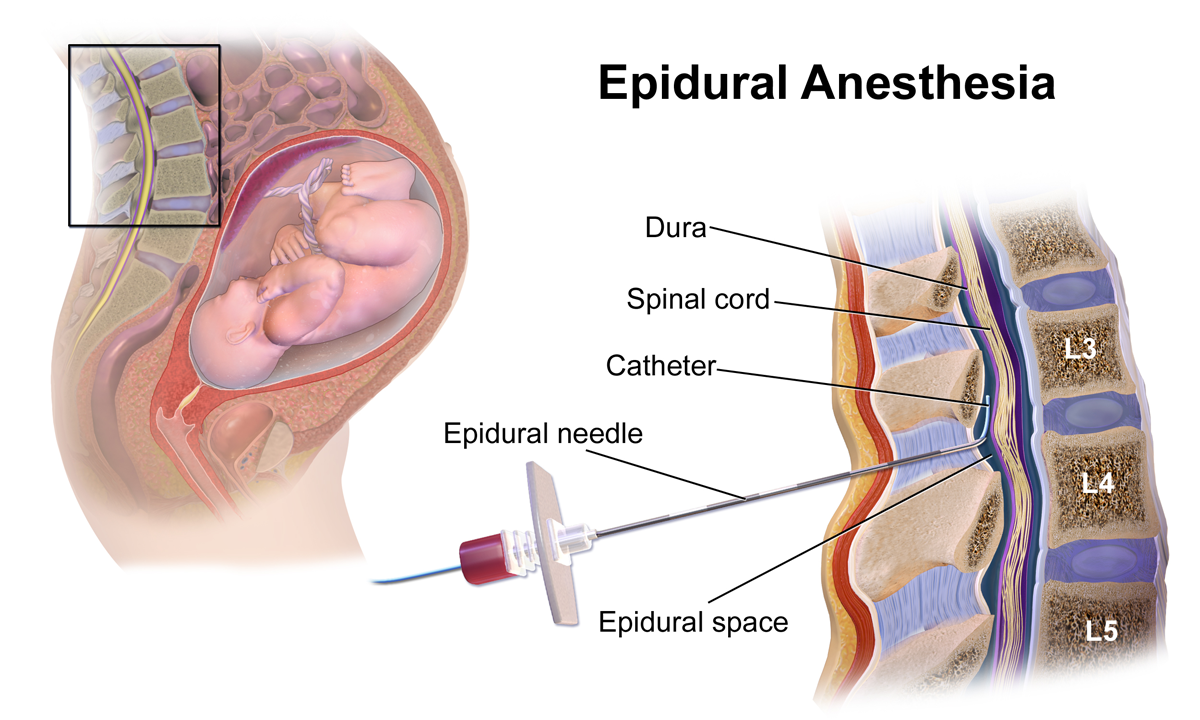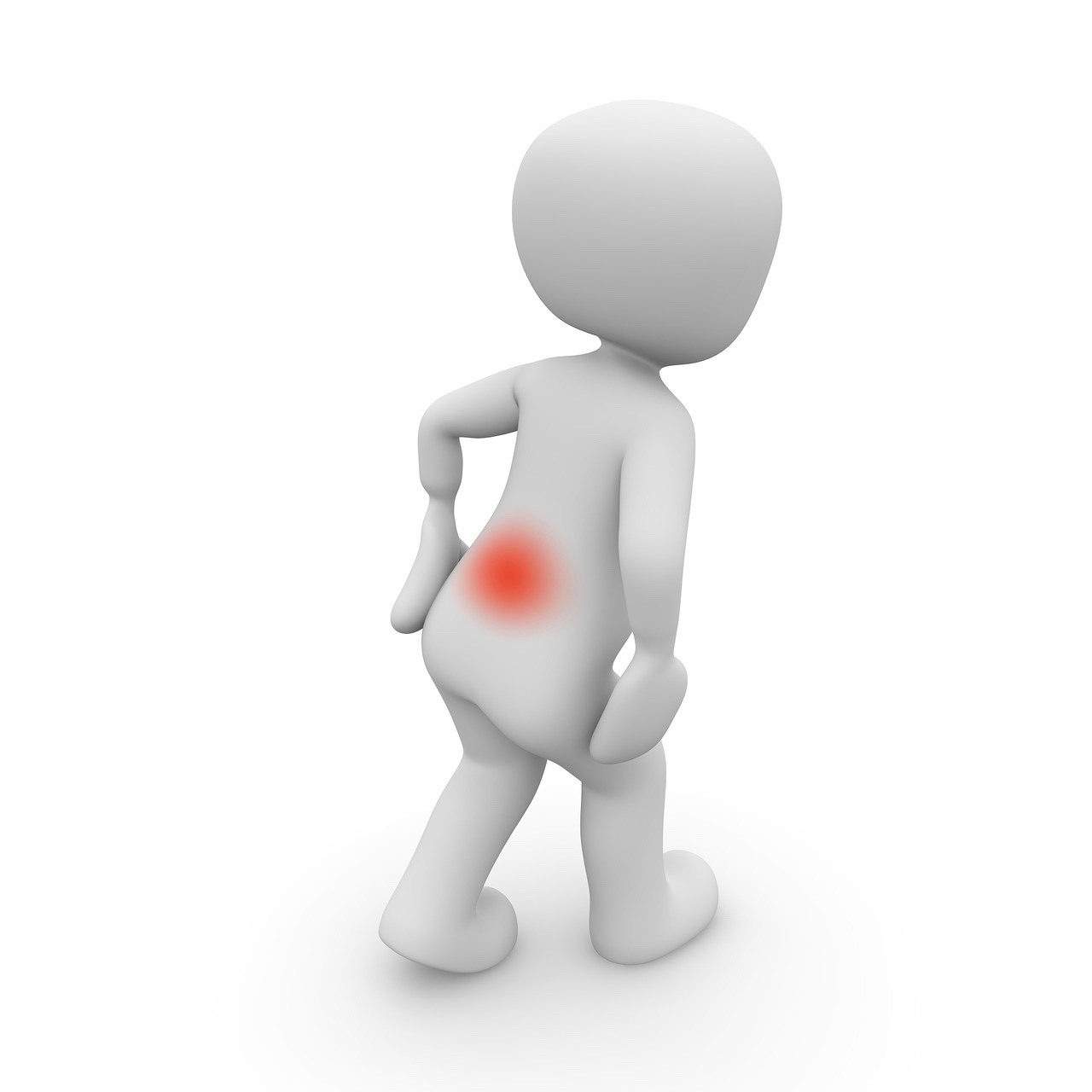Epidural and delivery
This document is intended to give you information regarding the technical epidural analgesia during childbirth, its benefits and risks. We ask you to read it carefully, sign it at end of document and bring it on admission of the delivery ward. This is the proof that you have received the information and that you consent to the establishment of an epidural if needed. Without this signed document, the anesthesiologist will not proceed with the epidural.
What is an epidural?
It is a technique of analgesia to remove or alleviate the pain associated with uterine contractions during labor.
Its principle is to block the nerves responsible for transmission of pain from the uterus. This blockage is done close to the spinal cord in the epidural space. It is done by injecting a local anesthetic combined with a morphine derivative, through a thin tube (catheter) inserted into the back using a special needle.
This is to date the most effective method to relieve the pain of childbirth. There are alternatives to the epidural. They will be offered if the epidural can not be established.
If it is necessary to perform a caesarean section, or any other intervention, epidurals can also be used. However, only the anesthesiologist decide to use epidural or use another anesthetic technique, depending on the circumstances and the clinical situation.
Placement of an epidural
Before the placement of the epidural, intravenous infusion will be placed at the hand or forearm. After checking your file and found the presence of the signed document, the anesthesiologist, helped by the midwife, will install you on the bed, lying on your side or sitting.
Epidurals have to be performed in a sterile manner. This is why the anesthesiologist will wear a cap, mask and sterile gloves. He will proceed first to the disinfection of the lower back, then to local anesthesia of the skin, and finally, the introduction of the needle and catheter into the epidural space. It will be important not to move during the period and notify the doctor when you have a contraction.
The introduction of the catheter into the back can sometimes be accompanied by an electric shock sensation in the back or legs. Once the catheter is in place, the needle is removed and a bandage is applied in the back. A monitoring of the blood pressure, heart rate and oxygen saturation will be installed and the anesthetist will inject the first dose of product by the epidural catheter.
The effect of the first dose is not be felt until after 10 to 20 minutes. This effect is then maintained either by reinjection upon request, but usually with a pump (PCEA) to help you manage your own needs (by pressing a pushbutton when the pains reappear). Throughout the work, the midwife regularly does tests to evaluate the quality of analgesia. After the birth of your child, the catheter will be removed in the delivery room by the midwife.
Technical difficulties / Failures
The epidural space contains many blood vessels, it can be possible that the catheter is introduced into one of these vessels. In this case, the catheter is removed and the procedure is repeated from the beginning. This will not affect you.
Even in expert hands, the placement of an epidural can be difficult or impossible. This can happen for example in case of obesity, malformations of the spine (eg scoliosis), a history of column surgery, or in case of insufficient cooperation of the future mother (constant movement). If after a few trials epidural can not be placed, the procedure is aborted. We will use other treatments against your pain.
Sometimes a catheter in place without particular difficulty is malfunctioning or asymmetrically (one side “sleeps” better than the other). This is due to the position of the catheter which is not strictly median but is positioned to the right or to the left. If the anesthesiologist does not resolve the problem by simple means, he may start the epidural again.
If an epidural is ineffective or insufficiently effective, despite the re-injections through the catheter, it may be necessary to replace it.
You should know that an epidural placed at the end of the work or in a patient whose work progresses very quickly, may not function or be only partially effective.
Contraindication for epidural
The contraindications to the placement of an epidural are:
• The refusal of the mother
• Coagulation disorders
• A skin infection of the back
• A generalized infection with temperature
• Cesarean section in extreme emergencies (bleeding, fetal distress …)
• Some neurological pathologies
Side effects of epidural
• A drop in blood pressure. Therefore, your blood pressure will be checked regularly
• Itching and / or nausea due to the use of a morphine derivative
• A feeling of heaviness in one or both legs, sometimes associated with difficulty in moving. The midwife regularly test the mobility of your legs
• Difficulty to urinate because the bladder is anesthetized. The midwife will sometimes empty it with a probe.
Complications of epidural
Headache: it can happen that the needle pierces the epidural membrane located after the epidural space (dura). This breach in the dura causes a leak of cerebrospinal fluid, responsible for the onset of headaches. These headaches may persist despite the painkillers and rest. In this case, a specific treatment can be carried out and will be explained in case of need.
Paralysis: 2 complications can lead to paralysis by compression of the spinal cord or nerve roots:
-the epidural hematoma
-the epidural abscess sometimes meningitis in case of maternal infection or sterility problems.
These complications require emergency spinal decompression surgery.
Partial or disorder of the sensitivity in one leg or foot.
Convulsions
Cardiac arrest / Death
These four complications are fortunately extremely rare. Some cases are described as hundreds of thousands of epidurals are performed each year worldwide
Epidural and back pain
Pain in the puncture in the back can last a few days but are not serious.
The persistent back pain longer after delivery are not related to the epidural. Studies have shown that 40% of women giving birth have lower back pain, no matter they have had or not an epidural. These pains are usually secondary to pregnancy itself or the position during labor and delivery.
Epidurals and baby
Numerous scientific studies have shown that epidural anesthesia is safe for the baby. Anesthetics injected into the epidural space act locally and spread in very small amounts in the blood.
Therefore, a small amount passes through the placenta into the fetal circulation, without consequence for the baby. For your baby, childbirth under epidural thus has no greater risk than birth without an epidural.
The anesthesia department is at your disposal to answer your questions and give you additional information you deem necessary.







